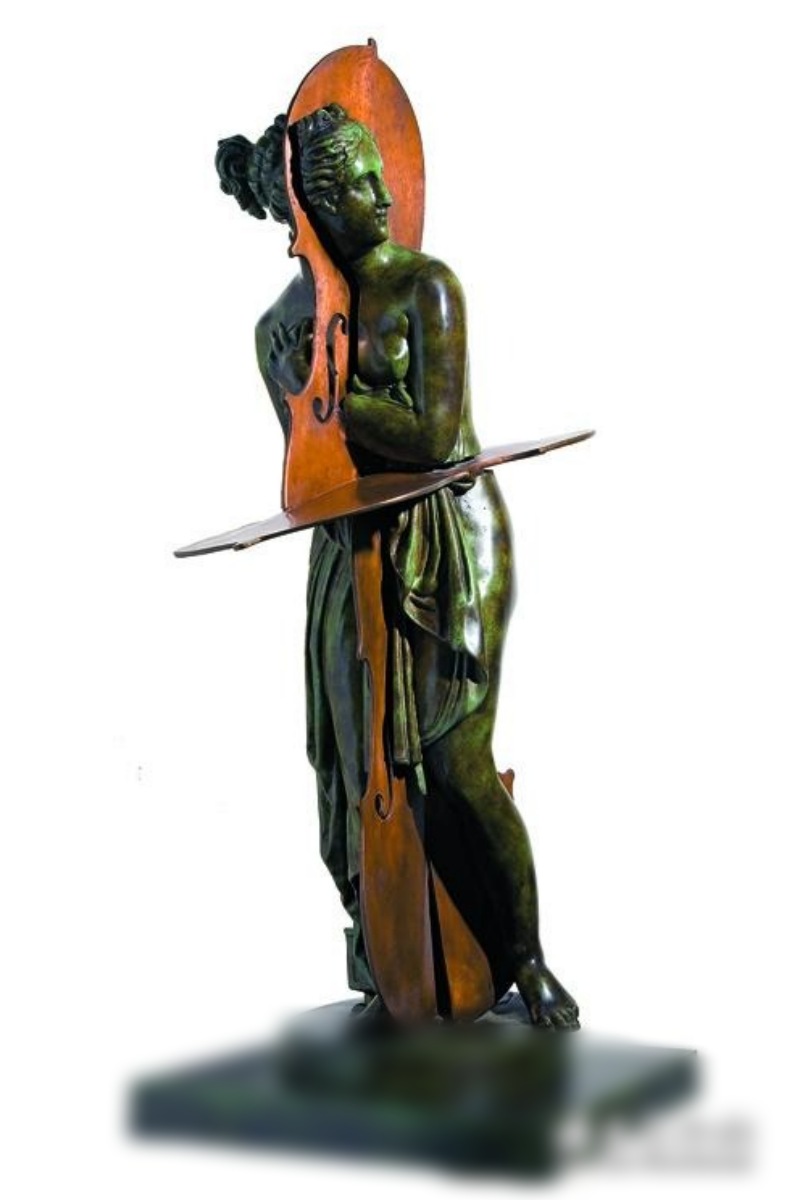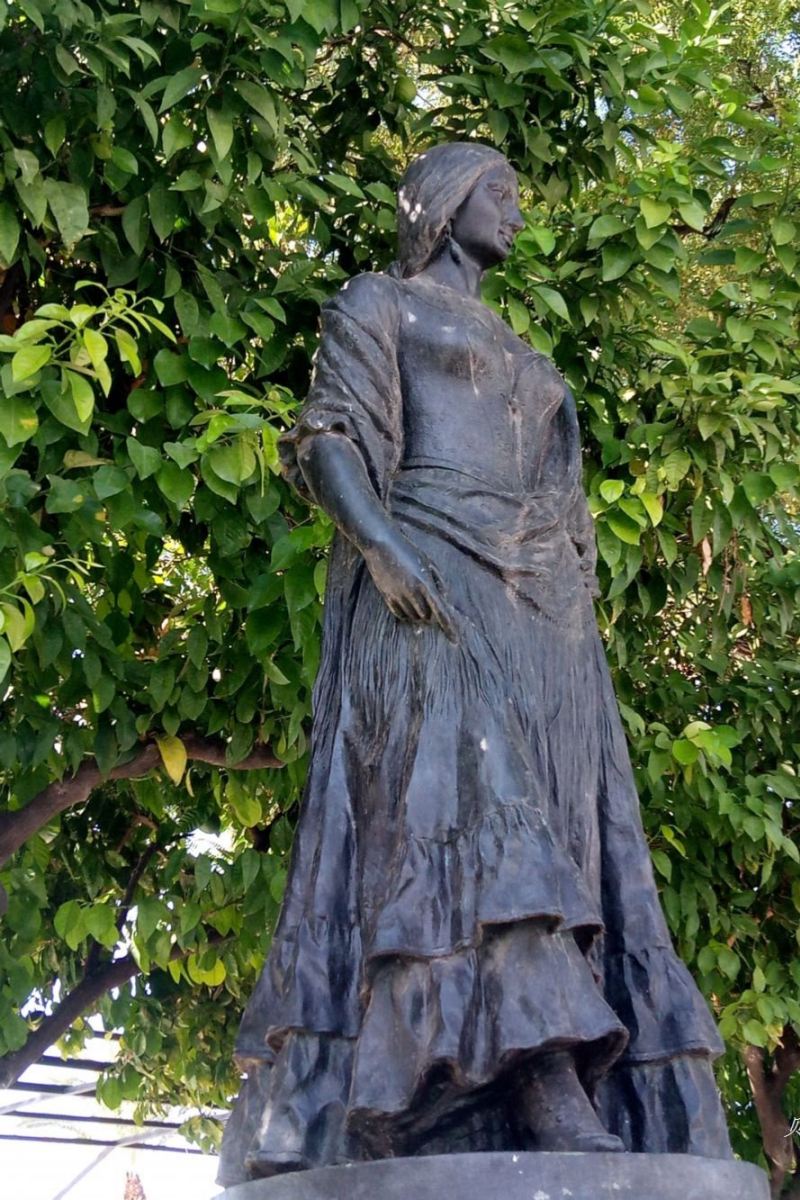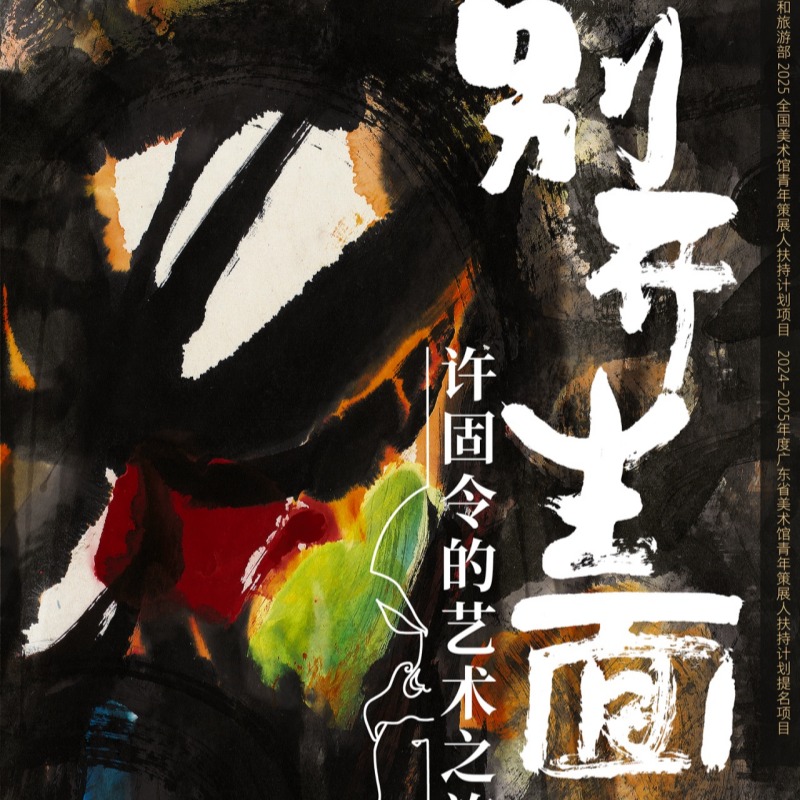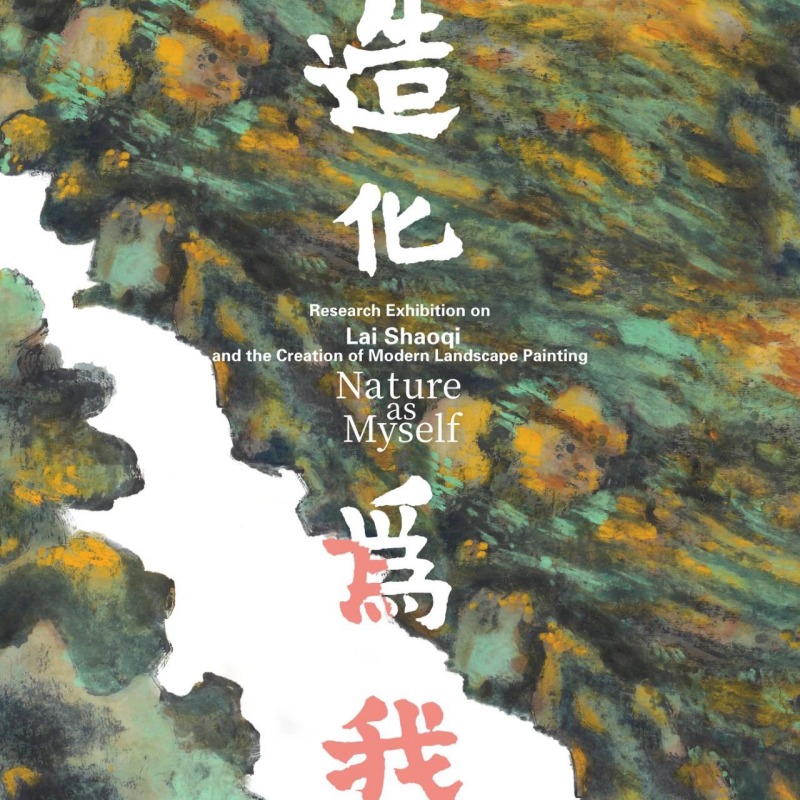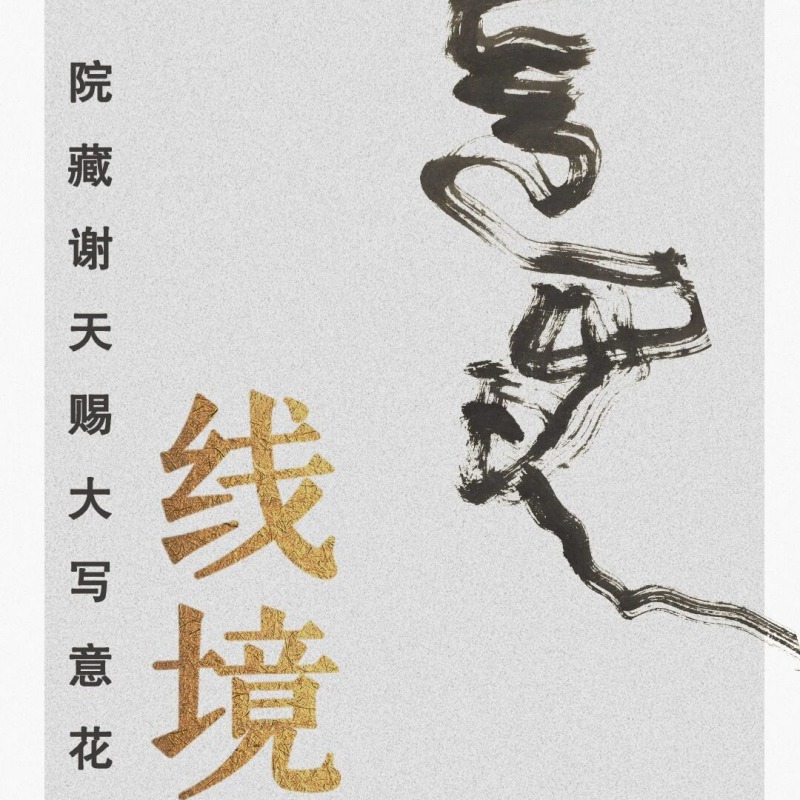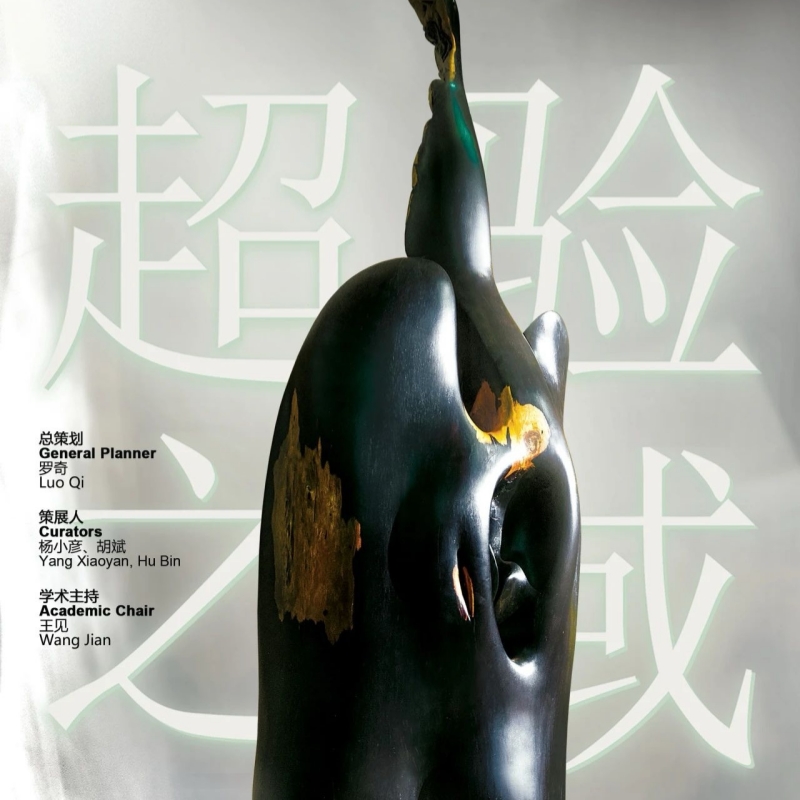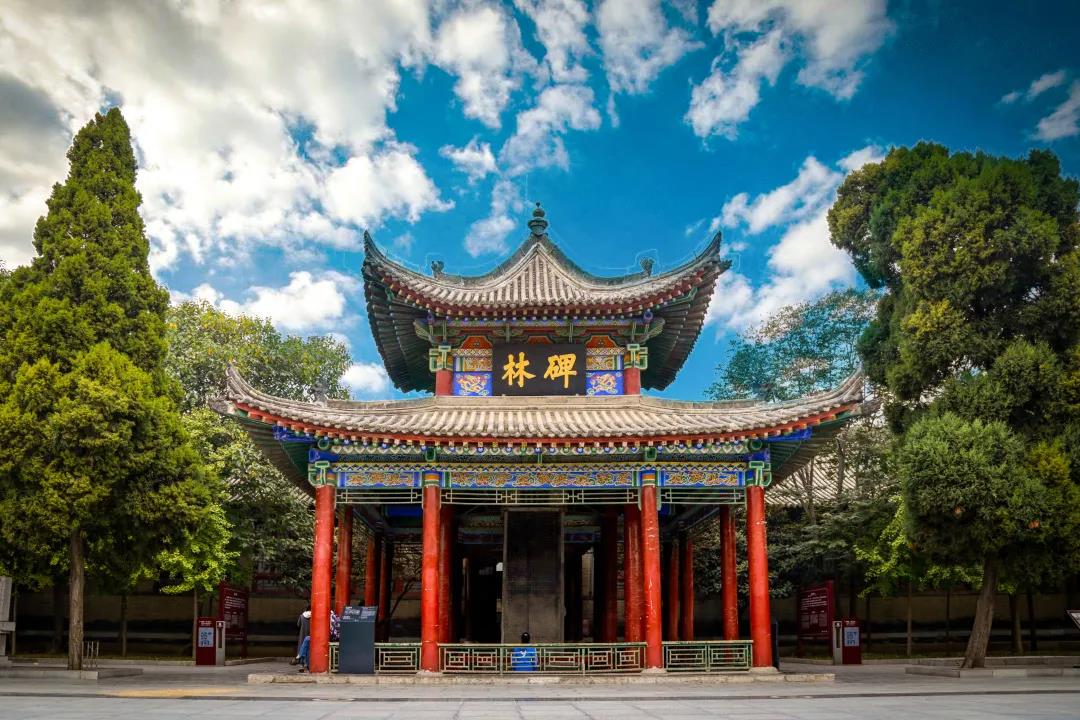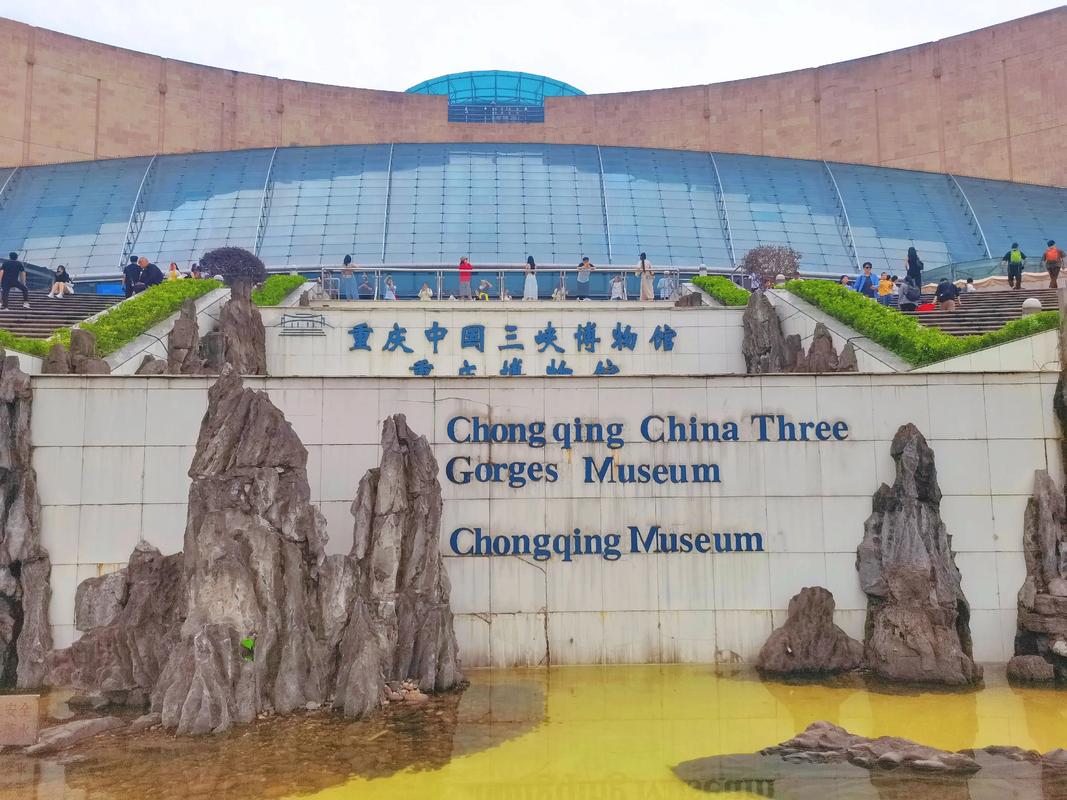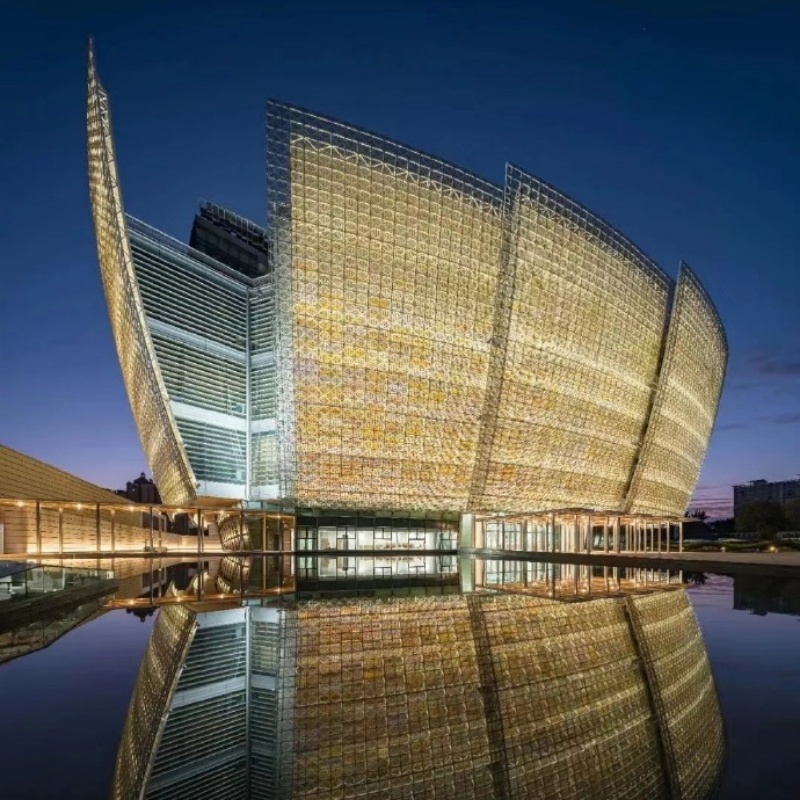
Guangzhou Museum of Art
From the banks of the Pearl River, the Guangzhou Museum of Art emerges like a blooming kapok flower, which helps catch your eye and slow down this city. Its threshold is a crossing into another rhythm, where Lingnan brushwork meets international icons like Picasso and Dalí. The galleries flow organically, connecting Guangzhou’s past heritage with its eye turned toward the world. With among the highest number of works — 33,000 and climbing — and rare national honors, the museum does more than just display art; it is a window into the city’s cultural lifeblood. For travelers in search of Guangzhou’s creative drive, this is where to start.
Guangzhou Museum of Art: More Than A Gallery
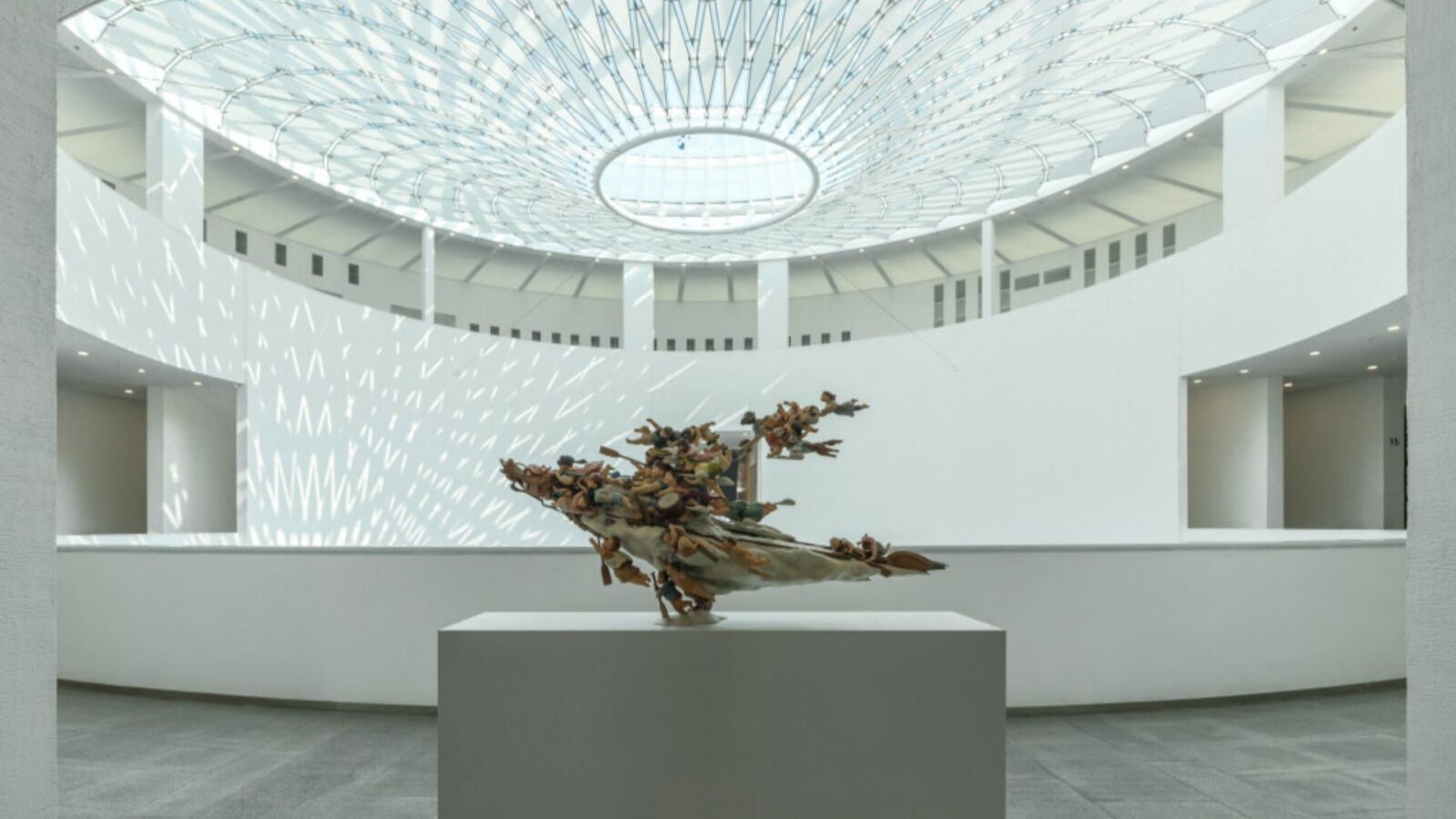
Inner of Guangzhou Museum
History and Architecture
"Lingnan Style, Greater Bay Area Grandeur: Forging a National Benchmark and World-Class Art Palace" resonates deeply with travelers, effortlessly drawing them from near and far to explore the cultural splendor it represents. The aspirational words are among the first things visitors will see at the Guangzhou Museum of Art. The Guangzhou Museum of Art had its origins in the founding of the Guangzhou Art Gallery on Yuexiu Hill in 1957. In 2000, a second concert hall opened alongside Luhu Lake. The new site opened to the south bank of the Pearl River, by 2023. Its site area is 32,600sq m and its floor space area is 80,000 sq m. The design is inspired by a kapok flower on water (symbolising Lingnan identity and Guangzhou spirit). Solar glass panel petals and a rainbow, six-tone core where art meets technology. It’s this cross-pollination of tradition and modern energy that defines the museum.
Collections and Galleries
The seven story interior contains a collection of exhibition halls, service areas, educational spaces and collections. The exhibit hall totals 19,000 square meters in the venue’s 21 galleries. The collection includes more than 33,000 works ranging from Lingnan calligraphy and painting to oil, watercolor, sculpture bronzeware and thangka. Permanent galleries include the Chinese Painting, Calligraphy and Sculpture halls. Celebrity halls celebrate artists such as Guan Shanyue and Zhao Shao’ang. The museum was renamed to national key art museum in 2015 and a national first-class museum in 2020. It is still the only college in China to have both honors.
Planning a riverside day near the Bund? Discover Shanghai History Museum: A Journey Through Time Beneath the Oriental Pearl
Explore Calligraphy Masterpieces
Running-Cursive Script on Poem "Huai Zhi"
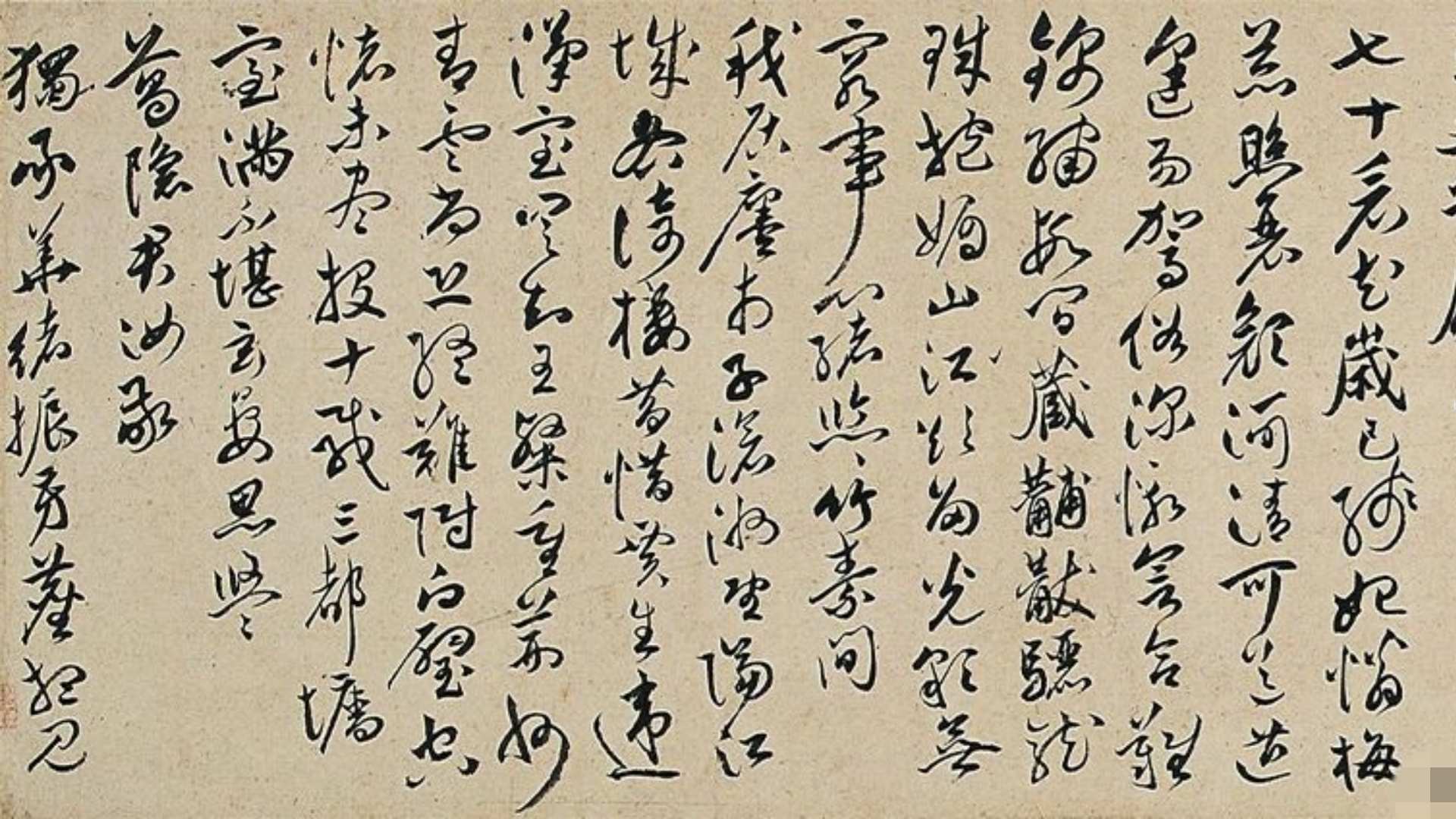
Running-Cursive Script
And there was something about the rhythm of Zhu Yunming’s calligraphy that appealed to me. The running-cursive lines fairly moved as they danced across the paper. I felt behind every brushstroke the ardor of a Ming literati. Visitors find this relic brings them closer to history, in human terms, beyond a painting. I always tell people that calligraphy is not just words, it’s personality. This piece demonstrates how art can be more eloquent than text is.
Poem Inscribed on a Pine Cliff Painting
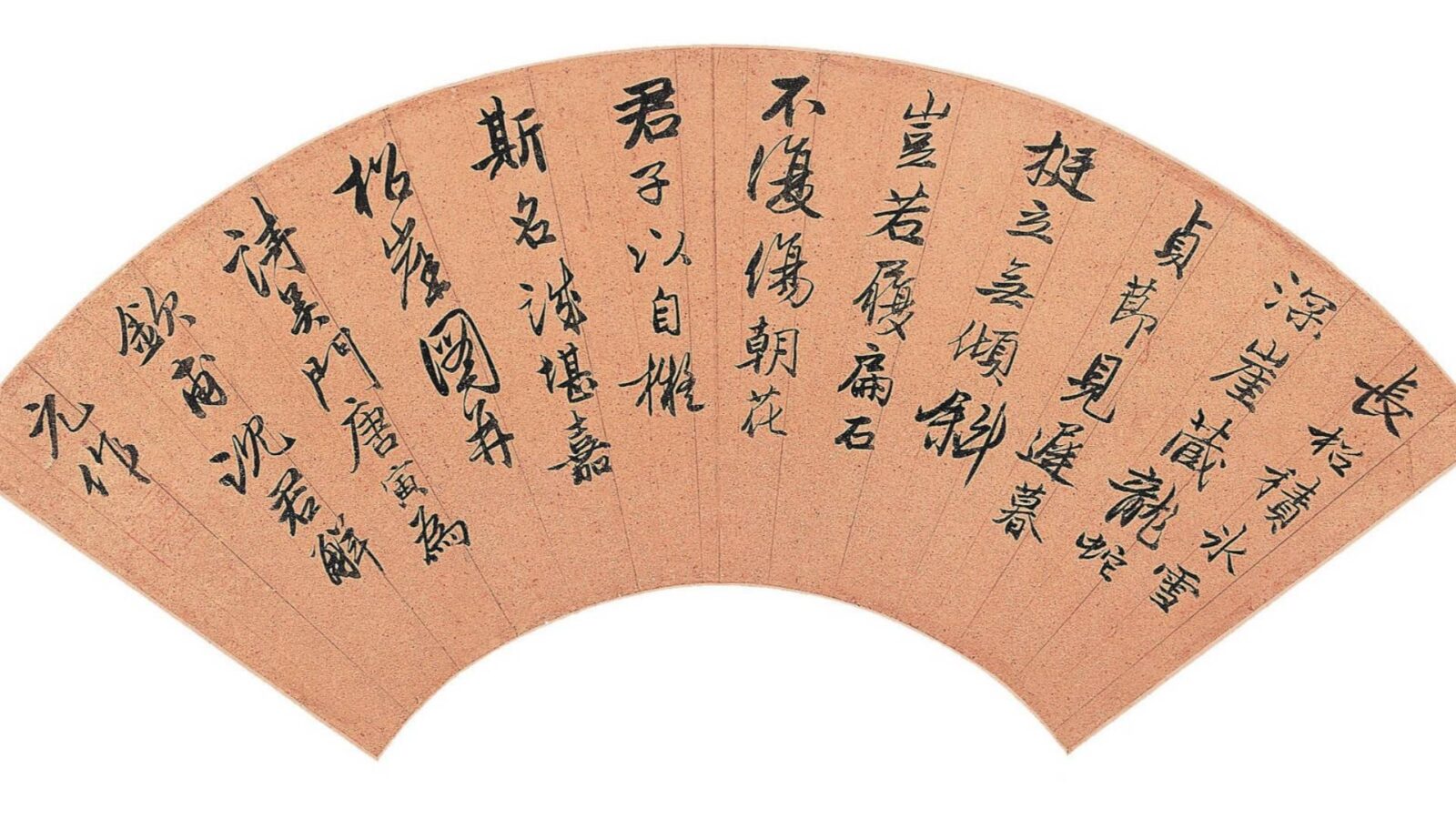
Poem Inscribed on a Pine Cliff Painting
The inscription by Tang Yin gave life to his painting. His calligraphy matched the rugged beauty of the pine cliff. His writing seemed to me the equivalent of hearing the painter’s voice. I’d think about what poetry and nature had to do with it. Tang Yin, in the past, was appreciated for art and literature. This scroll gives you an example of why he had such a reputation. Visitors will want to stay, too, as the blend of poem and image has a timeless quality.
Five-Character Couplet by Kang Youwei

Five-Character Couplet by Kang Youwei
I drew closer and examined the bold strokes of Kang Youwei. His calligraphy combined power with reformist spirit. He was born in the late Qing dynasty, a time that witnessed vast changes to society. The couplet showed a type of modernist confidence that was rare in the period. I appreciate how he married tradition with modernity. It matters precisely because it connects art and social change. It's a recommendation for travelers interested in history-connected-to-progress.
Admire Sculptural Highlights
- Venus with a Violin
- Carmen
Venus with a Violin
Arman's Venus with a Violin impressed me as an odd alloy of recycled and fresh. The sculpture took a standard figure and fragmented it with musical forms. There was a gleam of internationalism in the Chinese gallery. It entered the collection to link Guangzhou with world masters. On the continuum of history, it represents a watershed moment in the museum’s internationalism. I advise the curious that it’s worth seeing for its audacious collusion.
Carmen
Anna was an elegant and exotic Carmen. Originally made for a Moroccan prince, it exuded an air of Eastern allure. I observed its curves and the cultural conversation in its design. It just made sensuality out of the hall of sculptures for me. Another aspect of this history, not mentioned here, is the cross-cultural and patronage influence. I usually recommend travelers come here because it’s a good example of the intersection between East and West in art.
Lonely Cloud Departing
I walked around Lonely Cloud Departing Trace to touch its texture. The welded copper, wood and stone lent it layers of meaning. I liked the courage with which Peng Cheng and Xiong Qilun experimented with materials. The sculpture felt contemporary but expressed timeless subjects of isolation. In historical sense, it is a new period of time within Chinese sculpture that craft and creation interact with each other. Visitors should not overlook this work, as it shows the creative pulse of the museum.
Want to see Chongqing’s famous Chopstick Building? Check Chongqing Art Museum 2025 Guide: Chopstick Building, Exhibits and Travel Tips
Plan Visit: Check Practical Information
Manage Entry: Opening Hours and Tickets
Entry tothe Guangzhou Museum of Art is free of charge for permanent exhibitions, which include Lingnan paintings and calligraphy. Total presentations average $8–15 each and special exhibits are 50–100 RMB to enter. Whether booking online via the official website or a WeChat mini-program is easy, and foreigners can register using passports. It is open 10:00 to 18:30 (last entry at 18:00), and closed on Mondays, except holidays. Security includes ID and QR codes, and food, drinks and sharp items are not allowed. Lockers near the entrance can store small bags. Two hours is sufficient time to explore a visit.
Ticket, Hours & Location at a Glance:
| 📍 Location | No. 198, Yiyuan Road, Haizhu District, Guangzhou City |
| ⏰ Hours | Tue–Sun 10:00 to 18:30 (last entry at 18:00) |
| 🗓️ Closed | Mondays (except public holidays) |
| 🎟️ Tickets | Free entry (permanent + some temporary); Special exhibitions 50–100 RMB |
| 📲 Booking | Required: Paid special exhibitions & group visits (via official WeChat "广州艺术博物院" or website)Not required: Individual visits to free permanent exhibitions |
| ⏳ Suggested Visit | 2–3 hrs (4 hrs with special shows) |
Reach Destination: Choose How to Get There
The guangzhou museum of art is well-served by metro, taxi and car. By metro, take Metro Line 8 to Chigang Pagoda Station and then a 10-minute walk. Taxis from downtown take around 15 minutes, depending on traffic. Driving is doable, although parking gets crowded on weekends, so better to arrive early. From Haizhu Square towards the walkway, I crossed through local streets full of Cantonese shops have cultural flavor. Both provide the advantage of convenience, and as always, your decision will likely be based upon timeand budget.
Transport Options Simplified:
| 🚇 Metro | 🚗 Self-Driving | 🚶 Walking | 🚌 Bus |
|---|---|---|---|
| Line 8 → Chigang Pagoda Station (Exit B), 10-min walk | Park at the museum’s underground parking lot (5 RMB/hour, subject to availability) | 15-min walk from Haizhu Square (scenic route through local neighborhoods) | Take Bus 131A/B, 204, 264, get off at "Yiyuan Road (Guangzhou Museum of Art)" Station |
| Clear bilingual signs along the way | Free parking for visitors with special exhibition tickets (upon verification) | Safe sidewalks and pedestrian-friendly crossings | Buses run every 10–15 minutes |
Use Services: Language and Amenities
The guangzhou museum of art has bilingual labels and audio guides in English, Japanese and Korean, which can be borrowed against a passport. Guides describe cultural background and add to understanding of Lingnan art. Welcoming staff gently help visitors with hand gestures, or a few simple words. Amenities feature lockers, clean restrooms and café. families find interactive spaces for kids – so there’s a little something to entertain everyone. Local Haizhu Lake Park and dim sum restaurants nearby make for a cultural day post visit. These additional services add to the enjoyment & comfort of the journey.
Services & Surroundings:
| 🌐 Labels | 🎧 Audio Guide | 🙋 Staff | 🏞️ Nearby |
|---|---|---|---|
| Chinese + English (for all permanent and temporary exhibitions) | Free to borrow (deposit: passport or ID card; languages: English/Japanese/Korean) | Basic English support; fluent in Mandarin and Cantonese | Haizhu Lake Park (15-min walk), Guangzhou Tower (20-min drive) |
| Detailed descriptions of Lingnan art terms | 45-minute automatic playback (adjustable speed) | Will assist with exhibition navigation and amenity inquiries | Canton Fair Complex (10-min drive) |
| 🚻 Amenities | 🧒 Family Services | ☕ Rest Area | 🍽️ Nearby Eats |
| Accessible toilets, baby changing rooms, and luggage storage (free) | Kids’ art workshop (weekends, free with advance registration) | 1F lobby rest area with sofas and drinking fountains | Lingnan-style dim sum: "Lin Heung Tea House" (5-min walk) Cantonese home-cooked food: "Haizhu Local Cuisine Restaurant" (10-min walk) |
Explore Contemporary Exhibitions and Creative Dialogues
Breaking a New Path: the Art Journey of Xu Guling
When I entered Xu Guling’s show, I felt drawn to her bold surfaces. Opening June 30, it highlights how she fuses Lingnan ink traditions with experiments. I admired her fractured landscapes, where emotion and memory seemed to overlap. The textures pushed me to reflect on identity in both personal and cultural terms. For travelers interested in fresh Chinese art, this show feels like an invitation. Each piece left me curious and connected, making the visit memorable.
Fast Facts: Beyond the Surface
🖼️ Type: Solo exhibition
📅 Dates: June 30 – ongoing, 2025
📍 Venue: Special Exhibition Hall
⏱️ Suggested Visit: 1.5–2 hours
Nature as Myself: Research Exhibition on Lai Shaoqi
I stepped into the Lai Shaoqi retrospective and felt history surrounding me. The exhibition honors his 110th anniversary, showing works that shaped Lingnan art. Pine and Crane stood out with its strength, while lotus paintings glowed with vitality. His calligraphy carried both tradition and reformist spirit. Walking through the halls, I felt a dialogue between past and present unfold. I recommend this exhibition to anyone eager to see how art connects to social change.
Fast Facts: Commemorating Lai Shaoqi
🖼️ Type: Retrospective
📅 Dates: Aug 13 – Nov 2025
📍 Venue: Main Hall
⏱️ Suggested Visit: 2 hours
Lines and Artistic Conception: Freehand Bird-and-Flower Patntings
Xie Tianci’s gallery impressed me with its vitality. His bird-and-flower paintings used bold strokes and rhythmic white space. Sparrows in Bamboo Grove felt alive with movement, while lotus series offered calm strength. His style respected tradition yet spoke in a new voice. I realized how young artists keep Lingnan art alive while reshaping its form. For visitors, this exhibition offers a chance to witness tradition grow into something fresh.
Fast Facts: Linescape
🖼️ Type: Solo exhibition
📅 Dates: Sept 2025
📍 Venue: Gallery Wing
⏱️ Suggested Visit: 1.5 hours
Realm of the Transcendent: YAO-Zhong Weifan
I entered Zhong Weifan’s space and felt a rush of curiosity. His art fused ink with installation, creating an interactive journey. Fragments of Ink shifted with movement, while Silent Landscapes explored memory through light and form. The setting felt immersive, guiding me through sound and shadow. I left with a new sense of how tradition can transform. I suggest this show for travelers who want to experience Chinese ink art in unexpected ways.
Fast Facts: Domain of Experiment
🖼️ Type: Experimental solo exhibition
📅 Dates: Aug 15 – Dec 2025
📍 Venue: 3F Special Exhibition Hall
⏱️ Suggested Visit: 2 hours
Stay Prepared: Apply Practical Tips
Reservations and Entry Requirements
- Book tickets online in advance through the official website: Guangdong Museum of Art or WeChat mini-program. Foreign travelers can use passports instead of Chinese IDs. Morning slots (9:00–12:00) are quieter and more comfortable.
- For temporary exhibitions, purchase tickets during reservation. International cards like Visa and MasterCard are accepted online, while cash payment works on-site. Permanent exhibitions remain free for everyone.
- Bring your passport (original or digital copy). Entry requires both reservation code and ID. Security checks ban food, drinks, sharp tools, and large suitcases. Free lockers are available for storage.
Photography and Etiquette
- Photography is allowed in permanent halls for personal use. Avoid flash, tripods, and selfie sticks to protect delicate works. Temporary exhibitions may restrict photography—check posted signs before entering.
- Stay at least 1.5 meters from paintings and sculptures. Do not touch artworks or lean on cases. Keep phones silent and take calls in rest areas. Follow rules to maintain a calm atmosphere.
- Dress appropriately to respect the museum setting. Avoid overly casual outfits like slippers or pajamas. Neat clothing leaves a better impression on both staff and other visitors.
Cultural Awareness
- Respect ancient works and avoid making jokes or casual remarks. Many locals consider them symbols of heritage. Approach with curiosity and care.
- Staff offer basic English assistance. Rent audio guides in English, Chinese, Japanese, or Korean for detailed explanations. Most exhibitions also provide bilingual labels.
- Extend your trip after visiting the museum. Walk 15 minutes to Yuexiu Park for the Five-Ram Statue. Or ride the subway to Beijing Road Pedestrian Street for Cantonese dim sum at Lianxiang Lou or Taotaoju.
Check FAQs: Find Quick Answers
Q: Do I need to book tickets in advance as a foreign visitor?
A: For permanent exhibitions, you don’t need reservations—just bring your passport for entry. Special exhibitions require tickets, usually 50–100 RMB, which you can book online through the museum’s website or WeChat mini-program. International cards like Visa or MasterCard work for payment. Booking one or two days in advance is smart, especially on weekends and holidays. This preparation ensures a smoother visit without delays.
Q: What’s the easiest way to get there from Canton Tower?
A: The metro is easiest—take Line 3 to Chigang Pagoda Station, then walk 10 minutes. The trip takes less than 20 minutes total. Taxis take 15 minutes, with fares around 25–30 RMB. Both options are reliable, so it depends on your preference. Metro saves money, while taxis save effort. Either way, reaching the museum is straightforward and stress-free.
Q: Do they have lockers for bags or luggage?
A: Yes, free lockers are near the entrance. Small lockers fit handbags, while medium lockers fit 20-inch suitcases. Larger luggage over 24 inches isn’t accepted, so leave it at your hotel. Carry only essentials like a phone or camera to enjoy the exhibitions comfortably. Traveling light makes exploring the museum easier.
Q: Can I bring kids, and will they enjoy it?
A: Yes, kids enjoy the museum’s interactive areas, especially on the 3F. Activities like painting coloring or craft experiences run on weekends. Exhibitions also include simplified bilingual notes for children. These features make the museum both fun and educational. Families can spend quality time while learning about Lingnan art.
Q: Is Wi-Fi available inside the guangzhou museum of art?
A: Free Wi-Fi is provided across the museum. Connect to “GZAM-Free” and register with your phone number. If your SIM card doesn’t receive the code, ask staff for help at the service desk. They can provide a temporary password. Wi-Fi helps you use the museum’s app or share photos instantly.
Q: What should I wear for the visit in Guangzhou Museum of Art?
A: Wear comfortable clothes and flat shoes, since the museum spans multiple floors. There’s no strict dress code, but avoid flip-flops or tank tops, especially in special exhibitions. Smart casual is best—it keeps you comfortable and respectful of the cultural space. Dressing properly ensures an enjoyable visit.
Q: Are audio guides helpful if I don’t read Chinese?
A: Yes, audio guides are available in English, Japanese, and Korean. Rent one at the entrance with a passport or card deposit. Guides explain Lingnan art in depth and add stories beyond the labels. They help foreign visitors connect with the culture better. I recommend using one for a richer visit.
Q: What’s nearby if I want to make a day of it?
A: After the museum, visit Haizhu Lake Park, only a 15-minute walk away. It’s peaceful and offers a nature break after art halls. For food, try Lin Heung Tea House, five minutes by taxi, where you can enjoy dim sum classics. These stops let you pair art with Cantonese flavors and local scenery.
